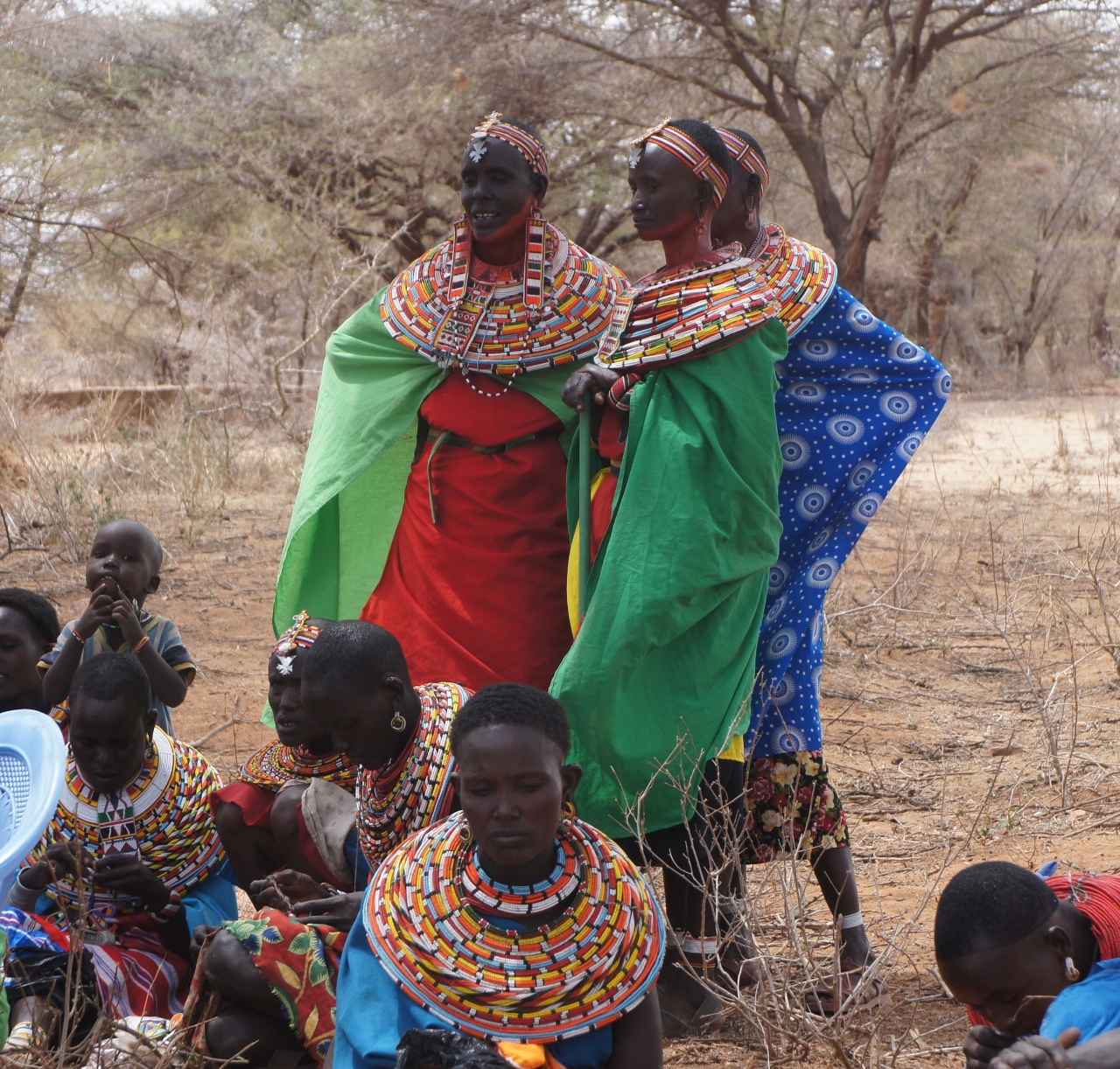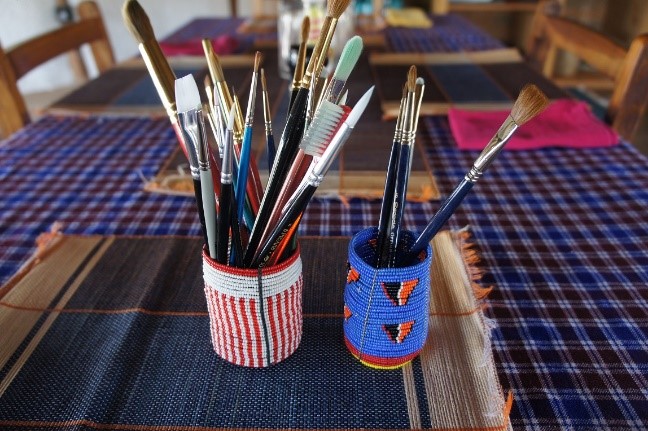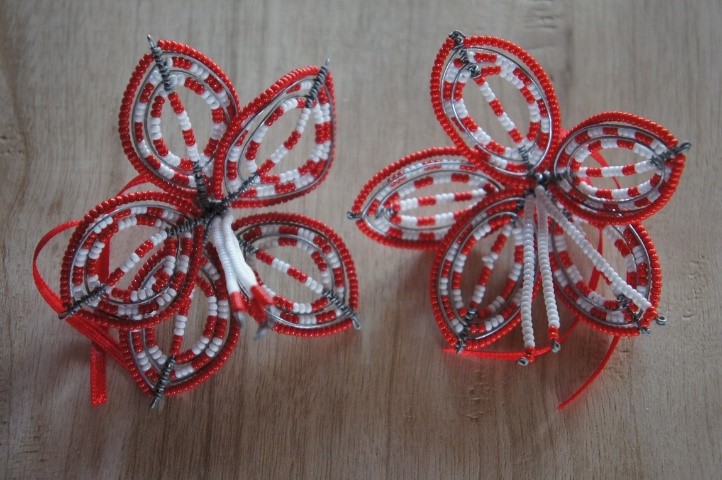By Marion Usselman
One of the many things Anne is working on these days is trying to move her beading project to a state where it is a profitable business that can provide a stable source of income for traditional pastoralist Kenyan women. Last month 1,000 women made money through NRT Trading by creating beaded products. The most productive woman earned $33 in the month, which was the pay for making 14 pencil pots. That doesn’t seem like much, but it can pay the school expenses for one primary school child for a year.
Every picture you see confirms that these women are experts at creating intricate beadwork. They learn to do it as young girls, and it is a central part of their culture. And the gift shops around here are full of fancy beaded items—belts, pillow cases, and flip flops, as well as traditional jewelry and decorations of all kinds. In theory, if NRT Trading can provide the infrastructure and access to markets, this could be a great source of income for women with no formal education, who live out in the remote bush. So Anne, Pam, and I have spent the last couple of days doing what any good infrastructure-builder does—sketching out a grant proposal to submit to an African Development organization supported by governments such as Denmark and the UK and NGO’s like the Gates Foundation. I’ve done lots of grant proposals, but this is completely different and fascinating to think about. Among the issues NRT Trading needs to address:
1. Pastoralist people tend to move around, and they don’t have transportation. Up till now the model has been that once a month the women gather under an acacia tree to pick up their supplies, work orders and instructions. They take their beads back at their manyattas where they can make their items while watching their children and tending to the cooking. The manyattas are very dirty locations—not acceptable places to make high value leather or fabric items. So they are limited to simple items that sell cheaply in places like zoos, not fashion items with a higher mark-up.
2. How do you provide the women with access to beads and materials without the risk of losing your inventory when women don’t bring back the completed products? Right now the women need to buy the beads up front, which is tough for women with no money. The bead market where they sell NRT their finished products comes only once per month, so the women don’t have the ability to get enough beads to make many things. This really limits their capacity, and it takes a long time for them to actually get paid for their work.
3. Though the women create intricate beadwork for themselves, there is no reason on earth why they should have the slightest understanding of what will sell to a Western audience. What experience do they have with key chains, Christmas tree ornaments, pencil pots or beaded hibiscus flowers? Obviously none, so the current model is for the women to create exactly what is specified, with a bit of leeway on choosing the colors. Moving forward, how do you promote creative design among the pastoralist women, while still creating products that will sell in the U.S. and Europe?
We debated lots of ideas, and lots of acronyms. The current idea, called Women’s Onsite Workshops (WOW), provides beading workplaces that are mobile (so they come to the women), clean (so they can work on fabrics and leather), and stocked with materials (so the women don’t have to front the supply money). Now we have to deal with providing things like security guards, but those are jobs also. None of it sounds easy or at all a sure thing, but if it works, it could make a real difference for these semi-nomadic families. Worth a shot. And if anyone hears about another funder who might be interested, let Anne know.



